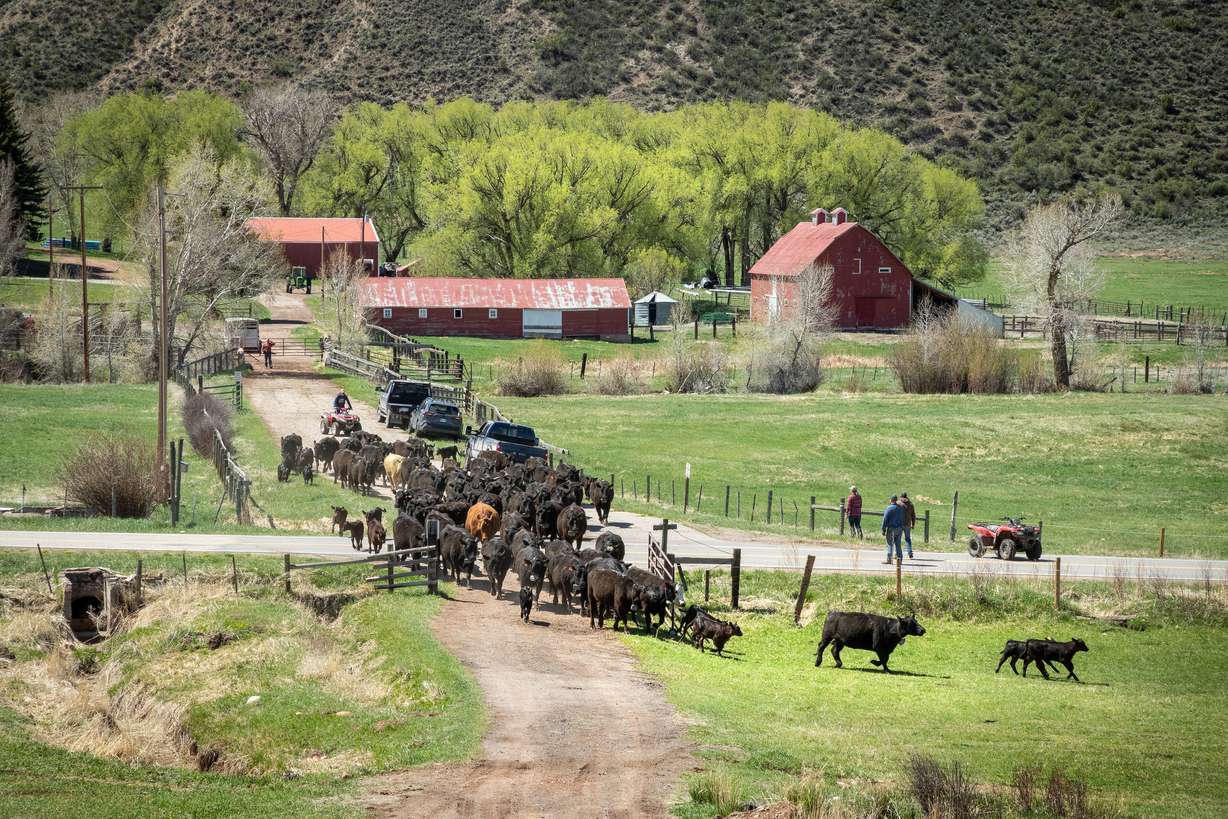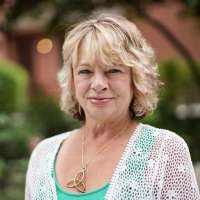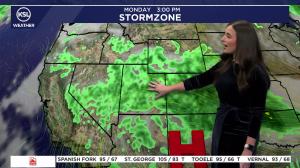Estimated read time: 5-6 minutes
Editor's note: This article is published through the Colorado River Collaborative, a solutions journalism initiative supported by the Janet Quinney Lawson Institute for Land, Water, and Air at Utah State University.
SALT LAKE CITY — There are unique ways to help save the ailing Colorado River, and a nonprofit foundation is awarding millions to boost drought resistance in two of the seven basin states.
On Thursday, the Foundation for America's Public Lands, the official congressionally-chartered charitable partner of the Bureau of Land Management, launched the Drought Resilience Fund, a first-of-its-kind grant program to involve locally led partnerships with the federal agency. The goal is to combat the severe drought challenges facing public lands and Western communities with an investment of $2.4 million in a pair of inaugural projects in the Colorado River Basin.
"The Colorado River is an essential lifeline that millions of people rely on every day. As the West faces a worsening water crisis, communities are stepping up and leading meaningful work to curb the harmful impacts of drought on public land and their livelihoods. The foundation's new Drought Resilience Fund will invest in the work of partners on the ground who have deep knowledge of the land," said I Ling Thompson, chief executive officer of the Foundation for America's Public Lands.
"By investing in projects that are led by local community-based stewards, the foundation will help drive economic vitality in rural communities and foster long-term, lasting stewardship of public lands and waters."
Two of the seven basin states were selected for the debut of the program as the foundation maps out its priorities: Colorado and Arizona. The money will be leveraged with investments from the Inflation Reduction Act and private philanthropic contributions.
The Eagle County Conservation District will receive $994,437 over three years to expand virtual fencing for cattle grazing on Bureau of Land Management lands in Colorado. Virtual fencing — which the bureau has pioneered on public lands — is a way to improve rangeland health and drought resilience using rancher-led innovation and technology to set boundaries on grazing areas instead of physical fences, which are challenging to maintain.
The foundation said that by keeping livestock contained to specific areas, virtual fences provide real-time data on the location of cattle and support active, rotational grazing to help prevent soil erosion. Virtual fencing also supports range restoration activities that improve rangeland health and drought resilience outcomes.

According to the USDA's Natural Resources Conservation Service, virtual fencing involves the absence of physical barriers to restrict cattle's movement. The cattle wear a GPS collar that tracks movement and if a wayward animal crosses the "barrier," it receives a series of auditory beeps to deter it from advancing. If that does not work, the animal receives a benign shock.
"Cattle have demonstrated the ability and tendency to rapidly learn the virtual fencing cues, eventually responding to the audio cue alone," the federal agency said. "Several studies have documented success with sheep and goats as well."
The technology also supports the mixed use of public lands by keeping cattle away from recreational areas, sensitive archeological sites, and restoration projects.
In its first year, the project will:
- Expand range restoration activities on ground covered by virtual fencing, combined with monitoring of range health, to track anticipated improvements in water and soil quality.
- Introduce virtual fencing and rotational grazing to Bocco Mountain in northwest Colorado, which has not been utilized by cattle in more than 30 years due to lack of fencing infrastructure.
- Provide staff and equipment to scale the project to include more ranchers and bureau grazing lessees.
The city of Sierra Vista, the Friends of the San Pedro River, and the Borderland Restoration Network — groups that have been long-standing partners of the bureau — will receive $1.5 million over three years to invest in the restoration of the bureau's San Pedro Riparian National Conservation Area.
The foundation notes that it is one of the most important riverscapes in the country, providing drinking water to southwestern communities and bolstering national security through facilitating operations at the Army's Fort Huachuca.
In its first year, the project will:
- Deploy restoration practices along the San Pedro River to decrease erosion, bolster habitat and improve resilience to drought conditions.
- Improve visitor center infrastructure and renewable energy production and storage at the San Pedro House to support the growing recreation economy.
- Support the groundwater recharge network to ensure communities and Fort Huachuca have access to reliable drinking water, while also supporting flows in the San Pedro River.
- Support youth crews doing restoration and monitoring on San Pedro tributaries and the river.
"With support from the foundation, the city of Sierra Vista looks forward to expanding the partner collaboration around the groundwater recharge network that helps provide the city with a reliable water supply while also supporting San Pedro River flows," said Sierra Vista Mayor Clea McCaa.
"Public visitation to the San Pedro Riparian National Conservation area is growing yearly. The visitor services provided by the Friends of the San Pedro River operate in a remote area that is primarily off the power grid. These funds will be used to modernize the currently antiquated solar power system that is no longer reliable," added Ron Stewart, president of Friends of the San Pedro River.
"This will provide a modernized solution to our energy requirements that does not rely on fossil fuels."
Pat Luark, part of the Luark family that owns and manages Reverse JL Bar Cattle, said the grant money is already producing results.
"The outcome from virtual fence and all the GPS location data you get on your cows is only as good as your operator and the team supporting the effort," Luark said. "That said, the folks supporting our family's efforts have been phenomenal and the results speak for themselves: We were able to have 150 cows out on our BLM grazing ground in winter because we had so much growth and ground coverage at a time when hay was going for $300/ton — that's a real benefit."









